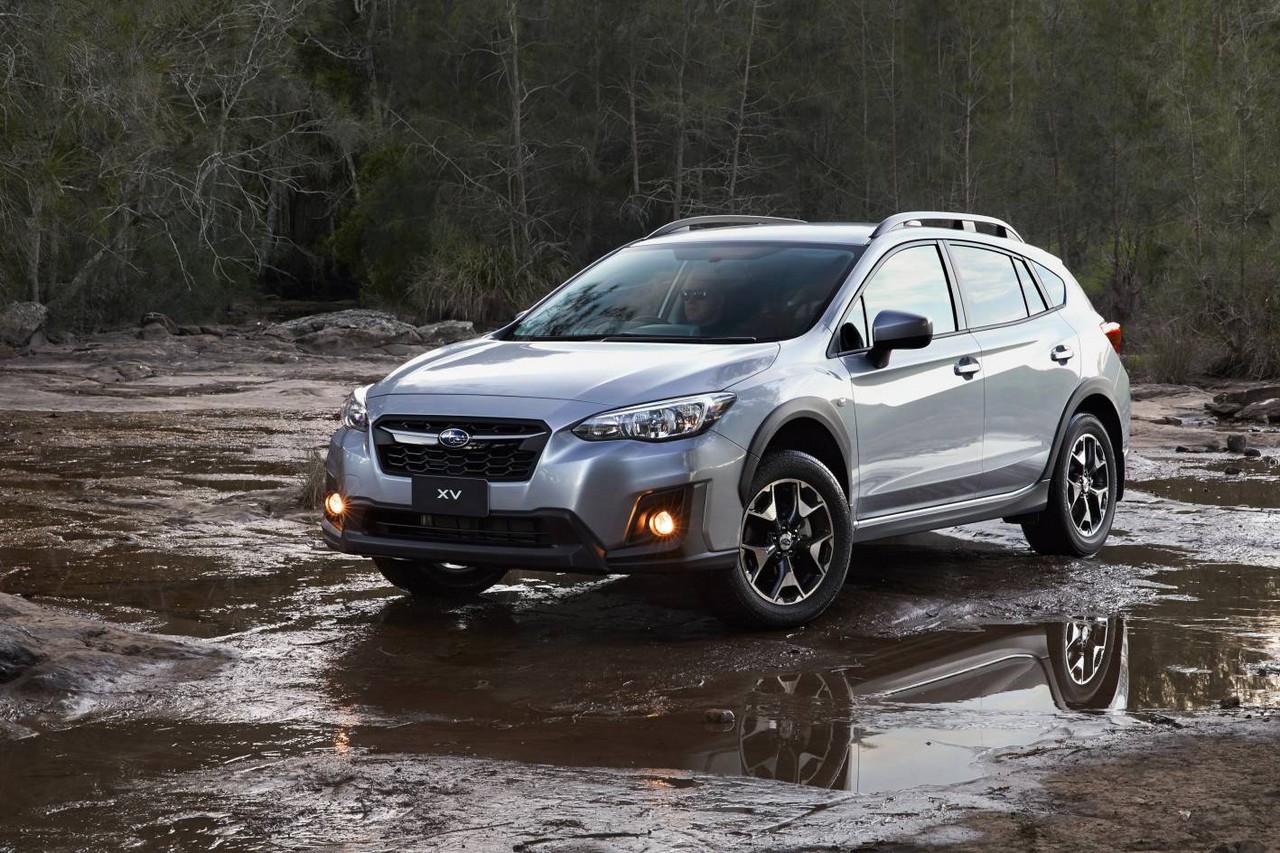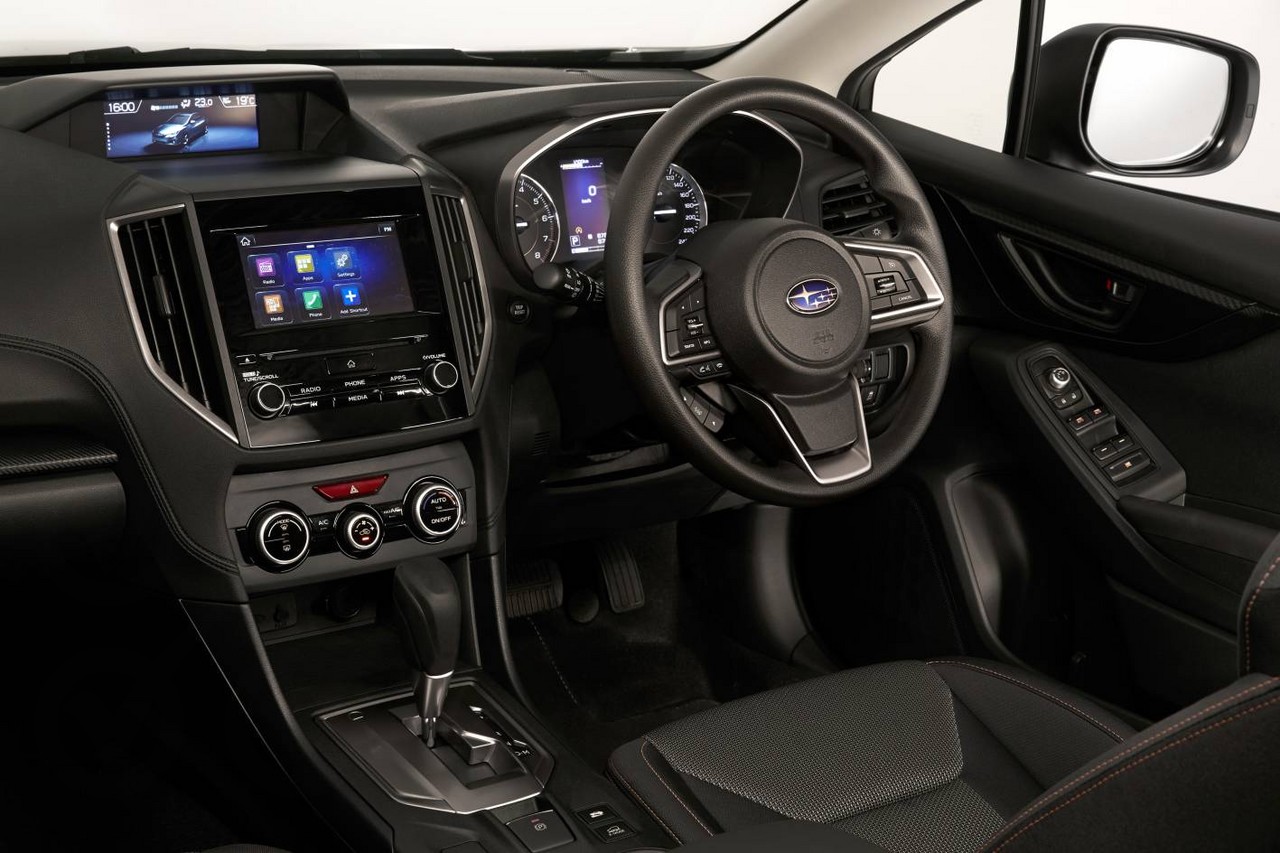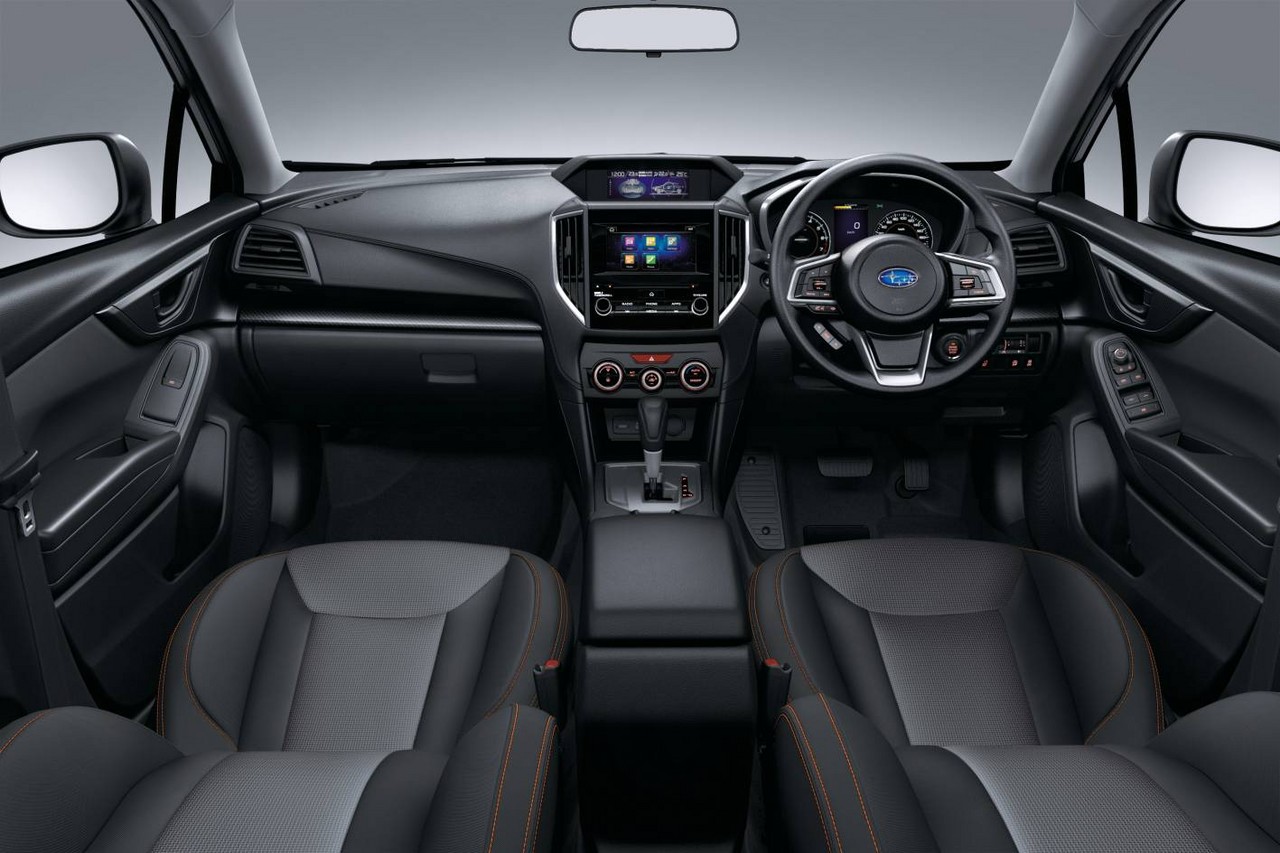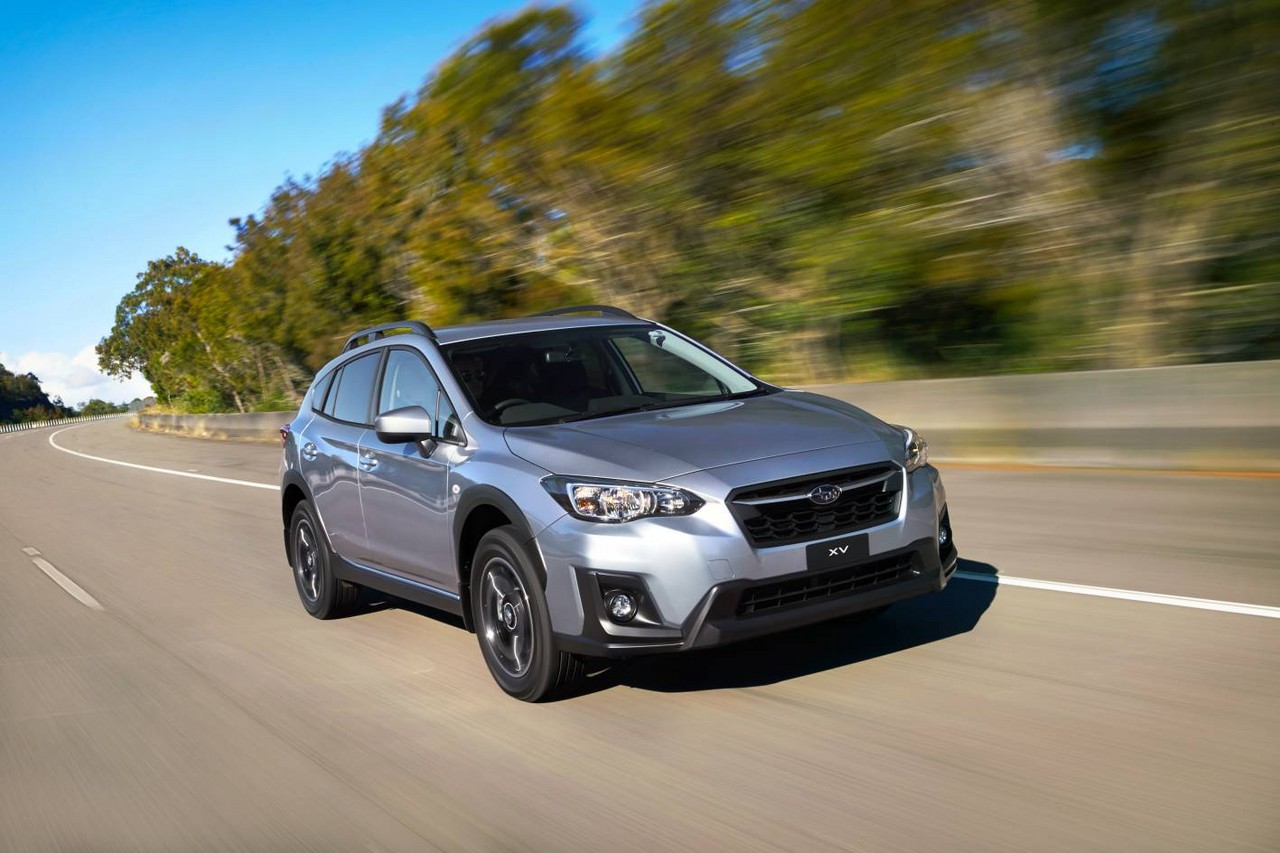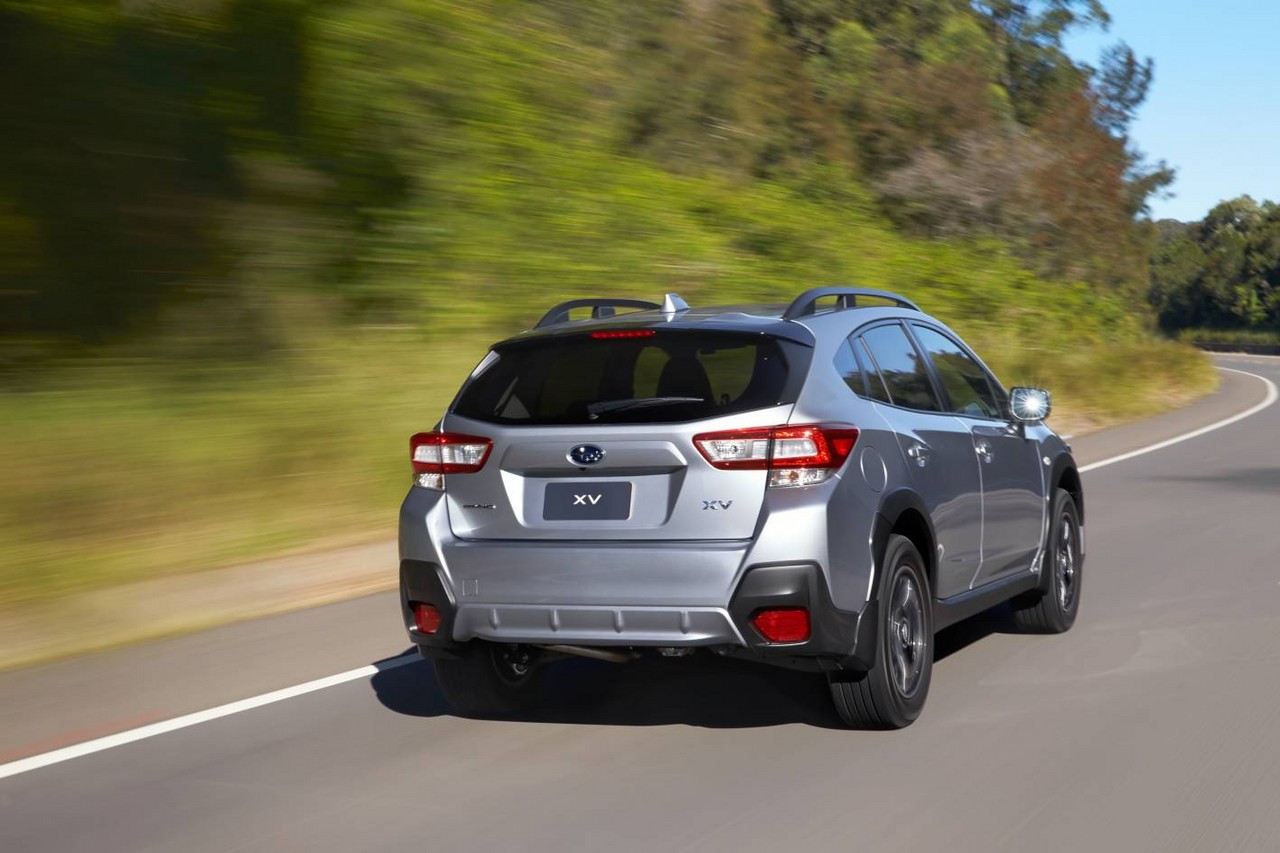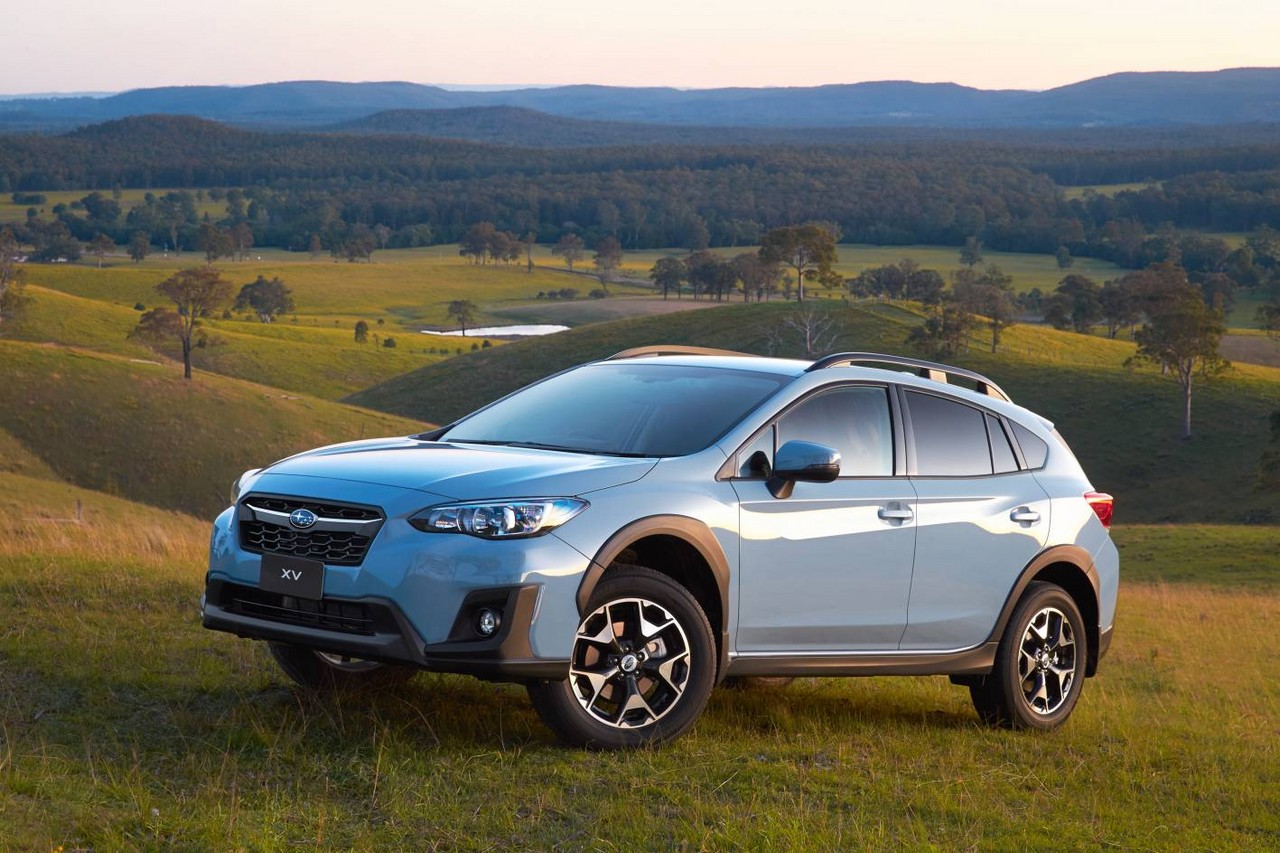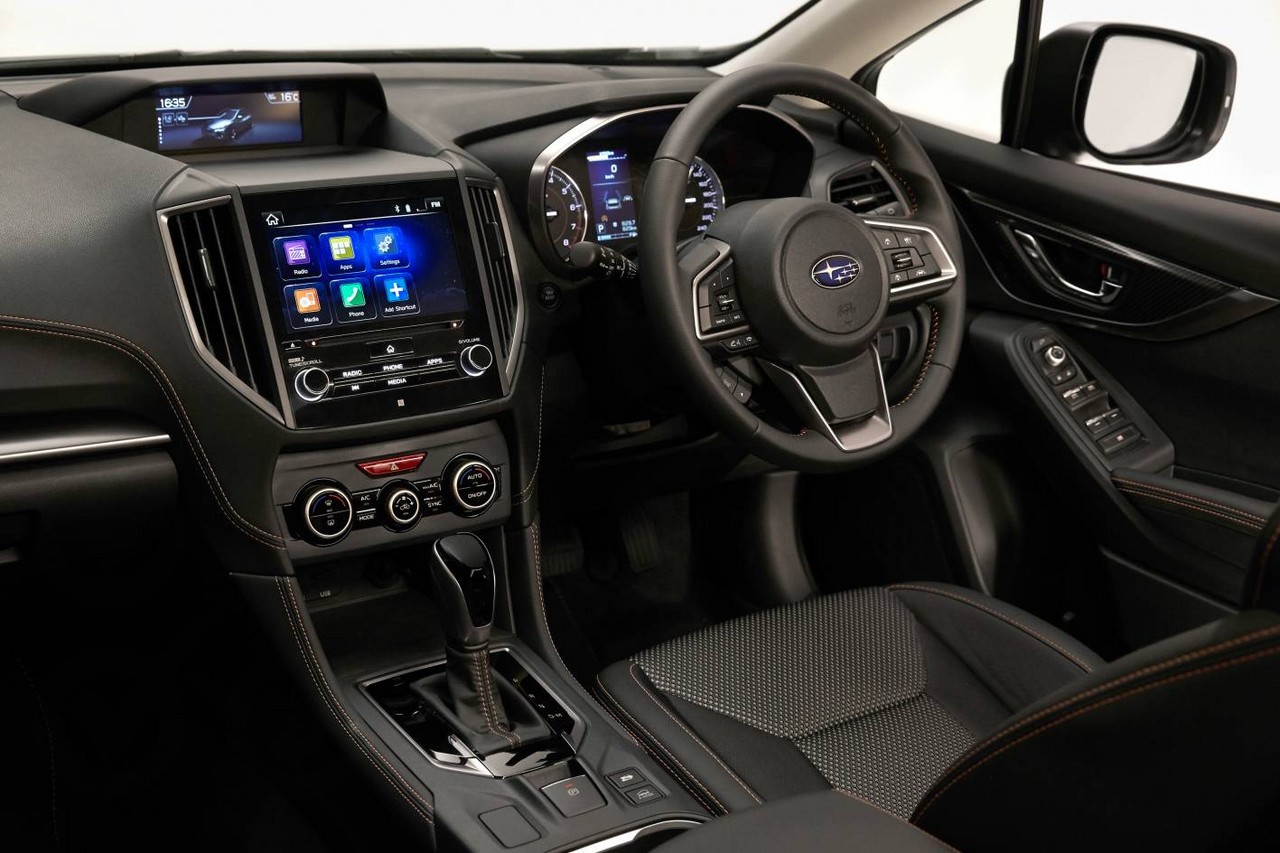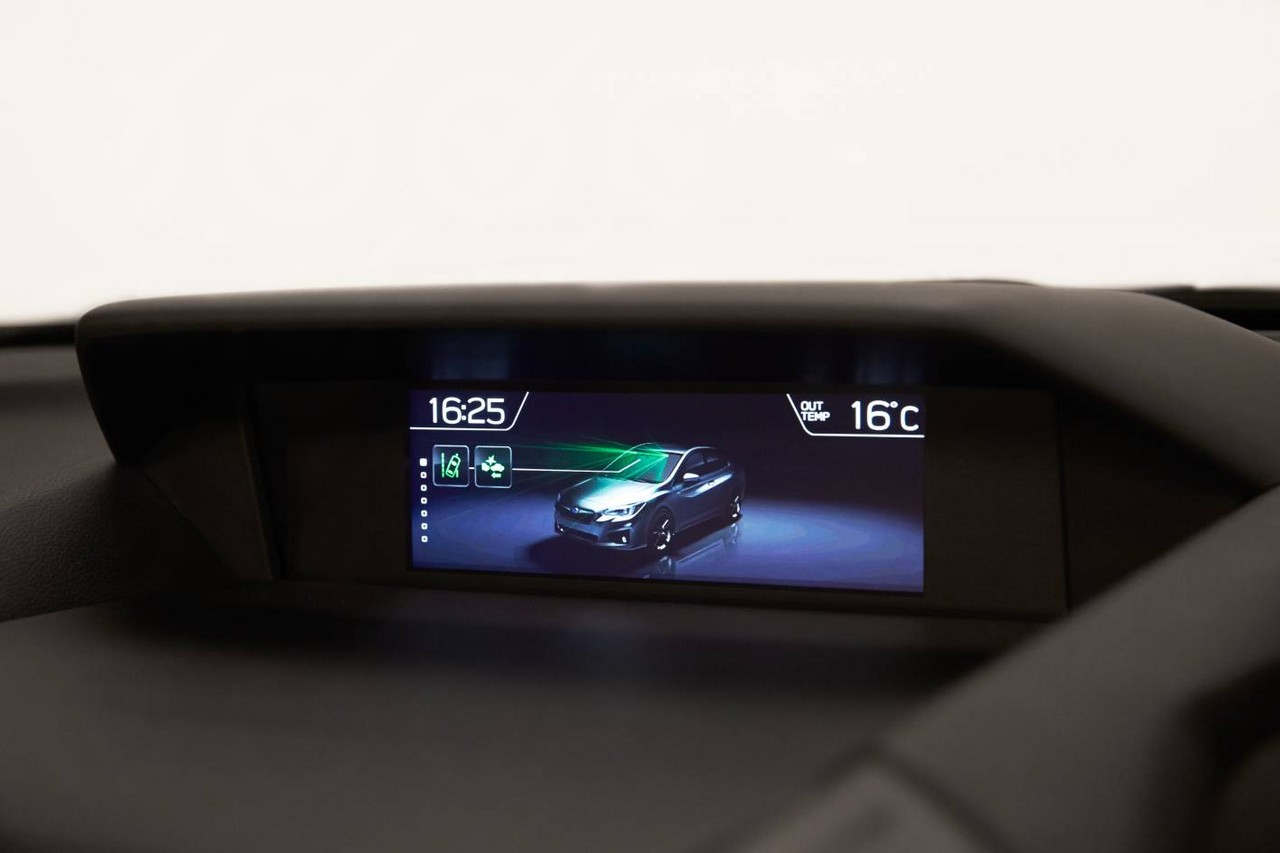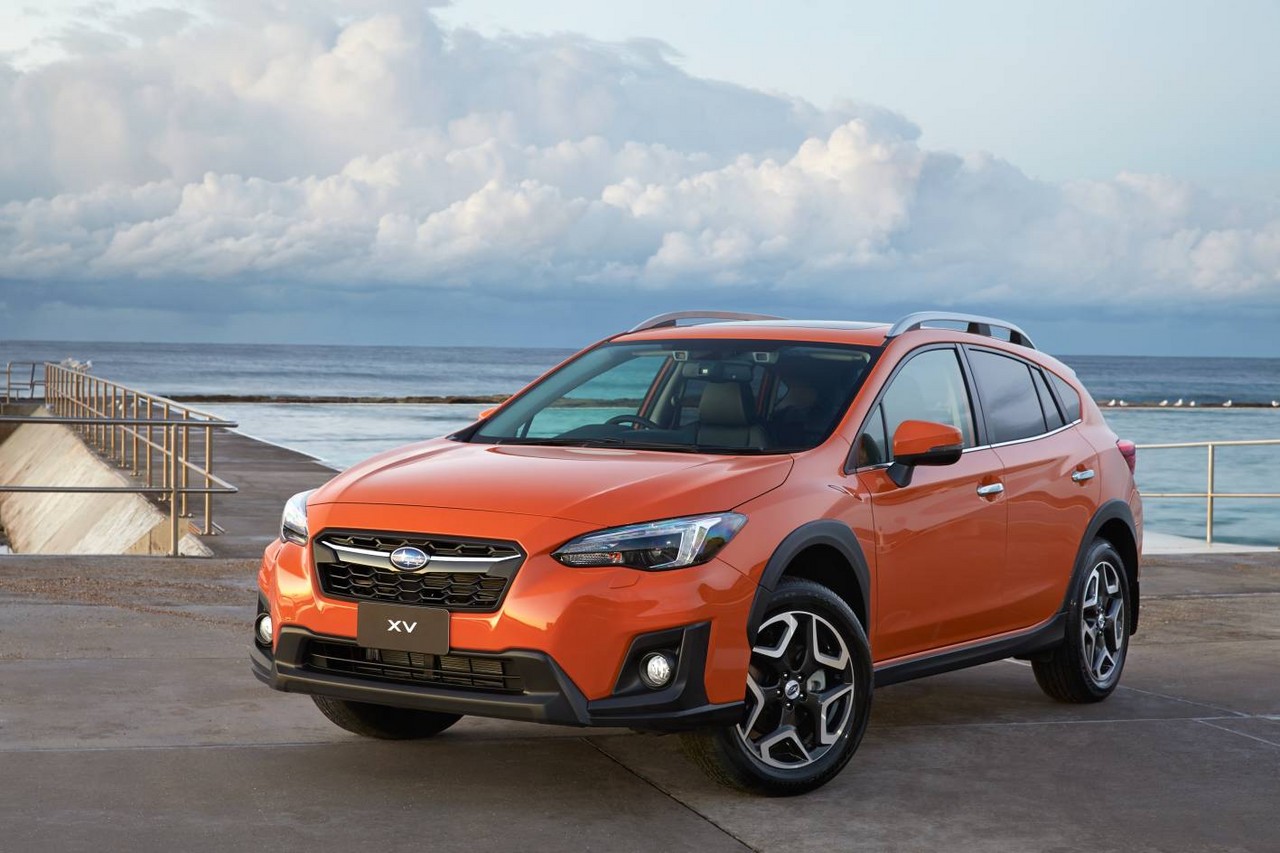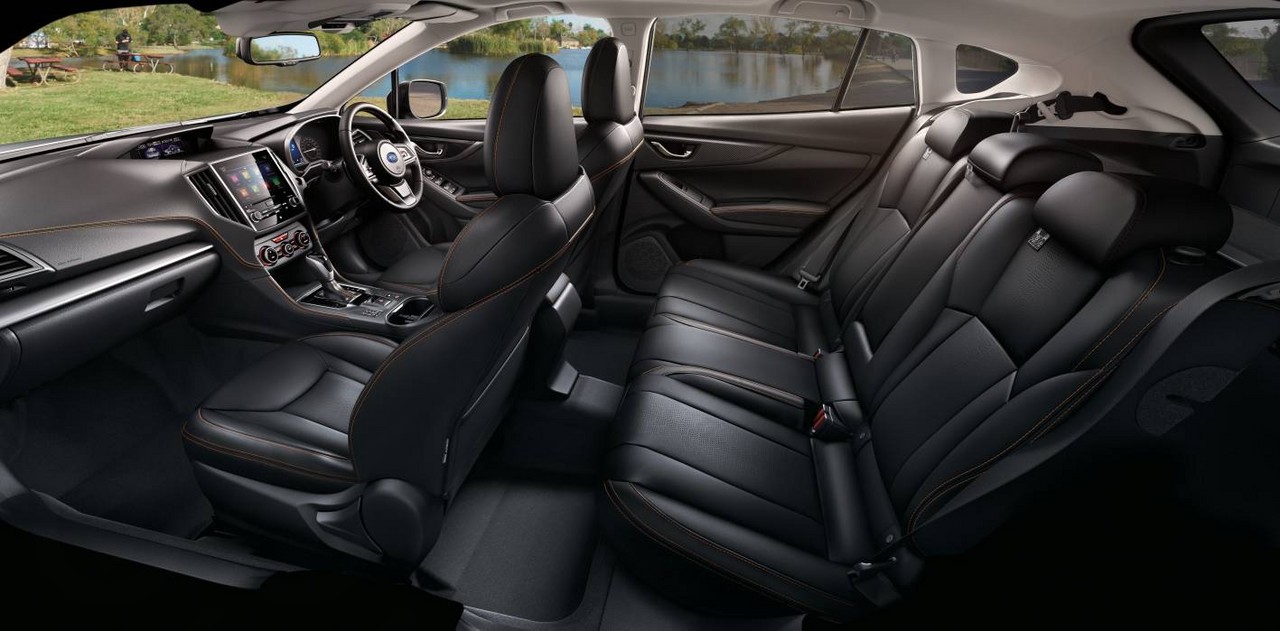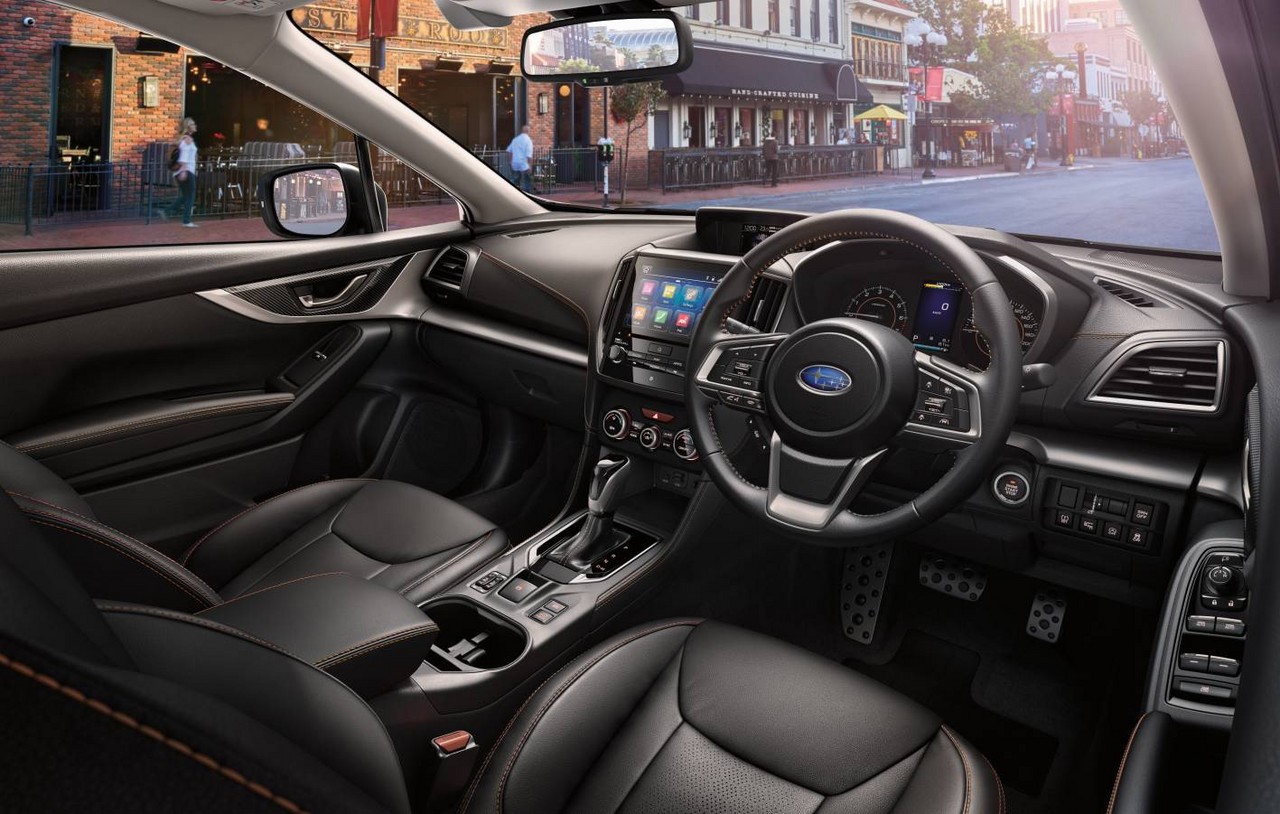
- Impressive ride/handling balance with Active Torque Split AWD system
- Well-weighted steering
- High standard of interior fit and finish
- Good ergonomics
- Availability of autonomous emergency braking…
- … but not standard for XV 2.0i
- CVT droning noise and, at higher engine speeds, whining noise
- Engine lacks low-rev torque of some rivals
- No manual transmission option
- Sunroof reduces headroom for XV 2.0i Premium and 2.0i-S
Overview
Released in Australia in June 2017, Subaru GT XV was a small hatchback with a raised ride height. Manufactured in Ota, Japan, the all-wheel drive Subaru GT XV was powered by a 2.0-litre FB20 petrol engine that was mated to a continuously variable transmission (CVT).
FB20 engine and ‘Lineartronic’ CVT
The Subaru GT XV was powered by Subaru’s 2.0-litre horizontally-opposed (or ‘boxer’) FB20 petrol engine which had an open-deck aluminium alloy cylinder block with 84.0 mm bores and a 90.0 mm stroke. Beyond this, the FB20 engine had an aluminium alloy cylinder head, double overhead camshafts, four valves per cylinder, variable intake and exhaust valve timing (Subaru’s ‘Dual Active Valve Control System’), direct petrol injection and a compression ratio of 12.5:1. For the GK/GT Impreza and GT XV, Subaru claimed that 80 per cent of the FB20 engine ‘s components were revised, with changes including:
- A more rigid cylinder block for a higher compression ratio;
- A lighter crankshaft and connecting rods;
- A molybdenum coating for all crankshaft bearings to reduce friction;
- Cast journal pieces for the #1 and #5 journals;
- Re-shaped intake ports, a revised tumble generation valve and port internal baffle to increase the tumble motion of the intake air;
- Conical shape valve springs (previously cylindrical);
- Sodium-filled exhaust valves for heat dissipation;
- For the pistons, a new crown shape and high thermal-conducting type top piston ring;
- A re-shaped head gasket;
- A water jacket spacer to reduce friction caused by the higher liner surface temperature; and,
- A high-flow exhaust gas recirculation (EGR) system and cooler.
To reduce fuel consumption, the FB20 engine had an ‘Auto Start Stop’ system which enabled it to shut down when the vehicle was stationary in traffic. Over the combined ADR 81/02 test cycle, fuel consumption for the Subaru GT XV was 7.0 litres per 100 km.
The Subaru GT XV was solely available with a ‘Lineartronic’ continuously variable transmission (CVT) which featured a seven-speed manual mode function. According to Subaru, both noise and vibration for the engine and transmission were ‘greatly reduced’ relative to their predecessors.
| Variant | Engine | Trans. | Peak power | Peak torque |
|---|---|---|---|---|
| 2.0i, 2.0i-L, 2.0i Premium, 2.0i-S |
1995 cc FB20 petrol F4 |
7sp CVT | 115 kW at 6000 rpm | 196 Nm at 4000 rpm |
Active Toque Split AWD system
For the Subaru GT XV, the all-wheel drive system utilised an electronically-controlled multi-plate transfer clutch (Subaru’s ‘Active Torque Split’ system). The system provides a default front:rear torque split of 60:40 in normal conditions, though additional torque could be sent to the rear wheels if slip is detected at the front wheels.
The Subaru XV also introduced Subaru’s ‘X-Mode’ which provided ‘integrated control of engine, AWD, braking, and other functions’ at speeds of 40 km/h or less to enhance driving performance on poor roads or slippery surfaces. At speeds below 40 km/h, X-Mode had the following effects:
- At low engine loads, the throttle would open more slowly to avoid sudden torque changes;
- For the traction control unit, AWD clutch pressure was increased by around 25 per cent to better control differential rotation between the front and rear wheels; and,
- Enhanced limited slip differential (LSD) control would counteract differential rotation between left and right wheels by accelerating brake boosting speed and delaying reduction of brake pressure when wheel rotation returned to normal.
At speeds below 20 km/h, Hill Descent Control (HDC) could be used to control the brakes on steep hills to maintain vehicle speed without any action required from the driver. HDC was automatically activated if speed was increasing on a descent, resulting in constant speed.
Body and dimensions
The Subaru GT XV was underpinned by the new ‘Subaru Global Platform’ which achieved an increase in torsional rigidity of 70 per cent due to:
- The increased use of high-strength steels (9 per cent 1470 MPa steel and 57 per cent 440 MPa steel compared to 1 per cent and 45 per cent, respectively, for the Subaru GP XV );
- An ‘optimised frame structure’; and,
- Stronger joins between parts.
Compared to the Subaru GP XV which it replaced, the Subaru GT XV was 15 mm longer (at 4465 mm), 20 mm wider (1800 mm), the same height (1615 mm) and had a 30 mm longer wheelbase (2665 mm); ground clearance was 220 mm. Luggage capacity for the Subaru GT XV was 310 litres beneath the cargo cover, though this increased to 765 litres when the rear seats were folded down. Furthermore, kerb weights for the Subaru GT XV ranged from 1462 kg to 1484 kg.
Suspension and steering
The Subaru GT XV had MacPherson strut front suspension with lower L-arms, coil springs and a stabiliser bar. Furthermore, the GT XV had double wishbone rear suspension with coil springs and a stabiliser bar.
The Subaru GT XV had rack-and-pinion steering with electric power assistance; the steering gear ratio was 13.0:1, while the minimum turning circle was 10.8 metres.
Safety equipment
Standard safety equipment for the Subaru GT XV included dual front airbags, a driver’s knee airbag, front side airbags, full-length curtain airbags (i.e. for front and rear occupants), ABS, electronic brake force distribution, brake assist, electronic stability control, traction control and front seatbelts with pre-tensioners and load limiters.
The Subaru XV 2.0i-L, 2.0i Premium and 2.0i-S were further equipped with Subaru’s EyeSight Driver Assist’ system which used a third-generation CMOS (complementary metal-oxide semi-conductor) camera and included the following technologies –
- Adaptive Cruise Control (ACC): could maintain a safe distance from the vehicle ahead by braking, or accelerate up to the driver-selected target speed where safe to do so. ACC could operate at speeds up to 145 km/h and could detect illumination of the brake lights of the vehicle ahead for smoother deceleration and acceleration;
- Lane Departure Warning (LDW): operating at speeds above 60 km/h, LDW used the camera to detect lane markings and determine if the vehicle was about to drift outside its lane. If this occurred, the driver would be alerted by an audible warning;
- Lane Keep Assist (LKA): operating at speeds above 60 km/h, LKA would provide corrective steering assistance to keep the vehicle in its lane if it was about to drift outside of it;
- Lane-sway warning: at speeds above 60 km/h, vehicle sway (or drift) was monitored and, if detected, a warning message and tone was issued. Vehicle sway could result from driver fatigue, inattentive driving or cross-winds;
- Lead Vehicle Start Alert: if an obstacle was detected in front of the vehicle, sudden movement or unintended depression of the accelerator would be restricted. A warning display and sound would also be activated;
- Pre-Collision Braking Assist: could prime the braking system for more rapid deceleration when the brake pedal was depressed or autonomous braking activated;
- Pre-Collision Braking: monitored the distance to objects ahead could detect if a collision was imminent, provided the relative speed difference of the vehicle ahead was less than 50 km/h . If detected, the brakes would be applied to avoid or minimise the severity of the collision (also known as ‘Autonomous Emergency Braking’, or AEB);
- Pre-collision throttle management: where there was a risk of collision with the vehicle ahead, pre-collision throttle management would reduce available acceleration;
- Pre-Collision Steering Assist: if there was a possibility of colliding with a car or object in front and the driver used the steering wheel to take evasive action, Pre-Collision Steering Assist could alter the stability control settings to assist the driver to avoid the collision; and,
- Brake light recognition: could detect if the brake lights of the vehicle ahead were illuminated – this could provide earlier detection of a collision hazard.
The Subaru XV 2.0i-S was also equipped with Subaru’s ‘Vision Assist’ safety technologies which included:
- Blind Spot Detection (BSD): could detect if another vehicle was in the driver’s blind spot and, if so, illuminated an icon in the door mirror. If the driver then applied the indicators to change into that lane, the icon would flash to warn the driver;
- High Beam Assist: could detect oncoming vehicles or vehicles ahead and, in response, automatically revert from high beam headlights to low beam to avoid dazzling other drivers. When the traffic had passed or been overtaken, the system would revert to high beams;
- Lane Change Assist (LCA): could detect if a vehicle in an adjacent lane was approaching from behind and would flash the icon in the door mirror on that side of the Levorg to warn the driver;
- Reverse Automatic Braking: reversing at speeds up to 15 km/h, Reverse Automatic Braking used four sonar sensors mounted in the rear bumper to detect objects up to 1.5 metres behind the vehicle and over a width 15 centimetres greater than the rear bumper on each side. Initially, the driver would receive an audible warning if there was a collision risk, followed by a reduction in engine power if a collision was assessed to be imminent. If the driver still did not apply the brakes, then emergency braking would be initiated; and,
- Rear Cross Traffic Alert: could detect oncoming vehicles that may cross the XV’s path if it were to reverse from a parking space, and warn the driver by flashing the icon in the applicable door mirror.
ANCAP safety rating
In ANCAP crash testing , the Subaru GK/GT Impreza received a five star adult occupant protection rating with a score of 35.80 out of 37, and this rating was extended to the Subaru GT XV. In the frontal offset test, protection of the front occupants was generally rated as good, though chest protection for the driver and lower leg protection for both front occupants was rated as acceptable (i.e. a slight risk of serious injury). In the side impact and pole tests, however, maximum points were awarded.
Euro NCAP testing
In Euro NCAP testing , the Subaru GT XV received a five star safety rating which included a 94 per cent adult occupant protection rating, an 89 per cent child occupant protection rating and a 68 per ‘safety assist’ rating – this rating, however, was based on Autonomous Emergency Braking (AEB) being fitted as standard. For Australian-delivered vehicles, the XV 2.0i omitted AEB, though the 2.0i-L, 2.0i Premium and 2.0i-S were so equipped.
For the frontal offset test, protection of the front occupants was generally rated as good, though protection of the inner legs was rated as adequate (i.e. a slight risk of serious injury). Maximum points were awarded in the side impact test in the more severe pole test, however, protection of the driver’s chest was rated as adequate.
Brakes
The Subaru GT XV had 294 mm by 24 mm ventilated front brake discs and 285 mm by 17 mm ventilated rear discs.
Features: Subaru XV 2.0i
Standard features for the Subaru XV 2.0i included 17 x 7.0J alloy wheels with 225/60 R17 99H Yokohama tyres, a six speaker sound system with CD player, a 6.5-inch touchscreen, 3.5 mm auxiliary and USB input, Bluetooth mobile phone connectivity and audio streaming, voice recognition, Android Auto and Apple CarPlay smartphone integration, cloth seat trim, climate control air conditioning, cruise control, front fog lights with integrated halogen daytime running lights, a rear view camera, 60/40 split folding rear seats, remote central locking, power windows with folding function, power windows, a height and reach adjustable steering column, a height adjustable driver’s seat, steering wheel gearshift paddles, push-button start, two 12 volt power jacks, two USB charge ports in the centre console, rear privacy glass, roof rails, tyre pressure monitoring and an immobiliser.
As standard, the Subaru XV was fitted with a space-saver spare wheel.
Features: Subaru XV 2.0i-L
Compared to the XV 2.0i, the Subaru XV 2.0i-L was further equipped with an eight-inch touchscreen (replacing the 6.5-inch unit for the XV 2.0i), ‘premium’ cloth seat trim, dual-zone climate control, a leather-wrapped steering wheel and gear shift lever, power folding door mirrors and illuminated vanity mirrors.
The XV 2.0i-L, 2.0i Premium and 2.0i-S variants also had a centrally positioned, dashboard-mounted Multi-Information Display (MID) unit which included a 4.2-LCD.
Features: Subaru XV 2.0i Premium
Relative to the XV 2.0i-L, the XV 2.0i Premium was distinguished by its TomTom satellite navigation system (factory-fitted) and power sunroof.
Features: Subaru XV 2.0i-S
The range-topping Subaru XV 2.0i-S was distinguished by its 18 x 7.0J alloy wheels with 225/55 R18 98V Bridgestone tyres, leather-appointed seats, an eight-way power adjustable driver’s seat, heated front seats, LED daytime running lights, directional LED headlights with dusk-sensing function, rain-sensing wipers, heated door mirrors, an auto-dimming interior rear view mirror and alloy pedals. Visual cues for the XV 2.0i-S chrome door handles, chrome window sills, side sill skirts and silver roof rails.
Specifications and links
- Specifications: Subaru GT XV (June 2017)
- Servicing Information: Subaru GT XV (June 2017)
- Behind the Wheel: 2017 Subaru XV 2.0i-S Review
